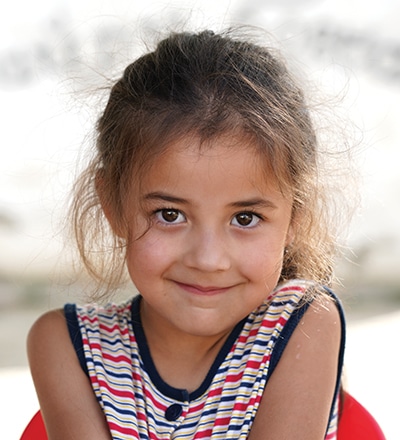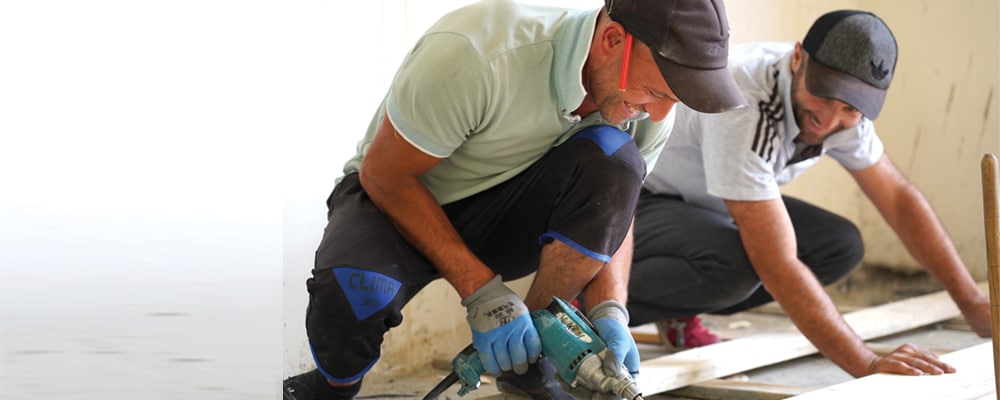By Libby Daghlian
Imagine the start of a perfect school day. You might envision the faces of smiling children waving goodbye to their parents. There might be a bell ringing and open doors to a sturdy and welcoming brick building. Inside, the walls and floors would be smooth and clean, and the temperature would be just right. The classrooms would be bright and cheery, and the students would have space to sit comfortably and store their belongings. On this perfect school day, students and teachers alike would have a clean, private bathroom space to use and water that is safe for washing hands and refilling water bottles. In this kind of environment, teachers feel confident in welcoming their students, and children feel safe and ready to learn.
Unfortunately, in Tajikistan, many school buildings have gone decades without renovation or regular maintenance and they are not only uncomfortable but unsafe. The impact of these conditions extends to long-term educational outcomes. According to a 2019 Word Bank report,1 inadequate water, sanitation, and hygiene facilities at schools were directly tied to student absenteeism and dropout rates, especially as adolescent girls deal with the additional task of managing menstruation.
For more than two decades, Central Asia Institute has built and renovated school buildings across the Gorno-Badakhshan region of Tajikistan, providing children with modern, safe educational facilities where they can learn and thrive.
In 2024, Central Asia Institute will open the newly constructed Preschool #2, which was supported by generous and caring donors like you. Preschools are critical to early childhood development and can contribute to a child’s success, not only in primary school but later in life as well.

My name is Amira. I am 5 years old. The new school will be red. There will be lots of lamps there. Our old school was broken. There wasn’t a place for games. The new preschool will have slides, stairs, toys, and a playground.
We spoke to some of the teachers and students who are part of the Preschool #2 community to learn what the new school means to them.
Retired teacher Shogunbekov Amrikhudo recalls when the original Preschool #2 building was erected. “The construction of the old building started in 1960 and was opened in 1964. I was a fourth-grade student at that time. After several years, the building slowly started to deteriorate.”
Shogunbekov is excited that the community will finally have a new school after 60 years. “In the future, the kids will live and study in very good and modern conditions, learn languages, and become good specialists that could create a better world for the people of this country.”
Maqbulova Gashnis, a longtime teacher at Preschool #2, has experienced firsthand just how difficult and frightening it can be to work in a building that has not been well maintained. “Our school building was in a state of disrepair. During the earthquake of 2016, we were very scared because the earthquake was strong, and we took all the children and ran out. We still keep that fear in our hearts.”

My name is Soro and I am 5 years old. I like playing with toys and dolls. In the old preschool, there was wind, and we went to the toilet in the snow. The new preschool will have a place for eating and playing. It will be beautiful.
Shogunbekov is excited that the community will finally have a new school after 60 years. “In the future, the kids will live and study in very good and modern conditions, learn languages, and become good specialists that could create a better world for the people of this country.”
Maqbulova Gashnis, a longtime teacher at Preschool #2, has experienced firsthand just how difficult and frightening it can be to work in a building that has not been well maintained. “Our school building was in a state of disrepair. During the earthquake of 2016, we were very scared because the earthquake was strong, and we took all the children and ran out. We still keep that fear in our hearts.”
She also cites the challenges with properly heating an old building, which is crucial during the cold winter months high in Tajikistan’s mountains. “We have very challenging winters. Since it is very cold, we have to burn coal, which makes smoke in the classrooms, and that smoke is certainly harmful for children.”
Maqbulova is optimistic about the new building: “When I imagine a new building, it is spacious, clean, and warm, with nice windows, no coal smoke or dust. We don’t have to worry about heating anymore. Our hands are clean, and our children are neat and tidy.” She says the children are equally curious and eager for the grand opening. “When we come to work in the morning, the children ask us: What will happen in the new preschool? Everything will be new? New toys, new books, new beds? When we go out, will there be a playground?” With amusement at their curiosity, she assures the students daily that yes, it will all be new.

1 “The Impact of School Infrastructure on Learning.” The World Bank. 2019. https://documents1.worldbank.org/curated/en/853821543501252792/pdf/132579-PUB-Impact-of-School.pdf#:~:text=The%20potential%20benefits%20of%
20improving%20the%20spaces%20where,enhanced%20in%
20schools%20with%20better%20physical%20learning%20environments.

